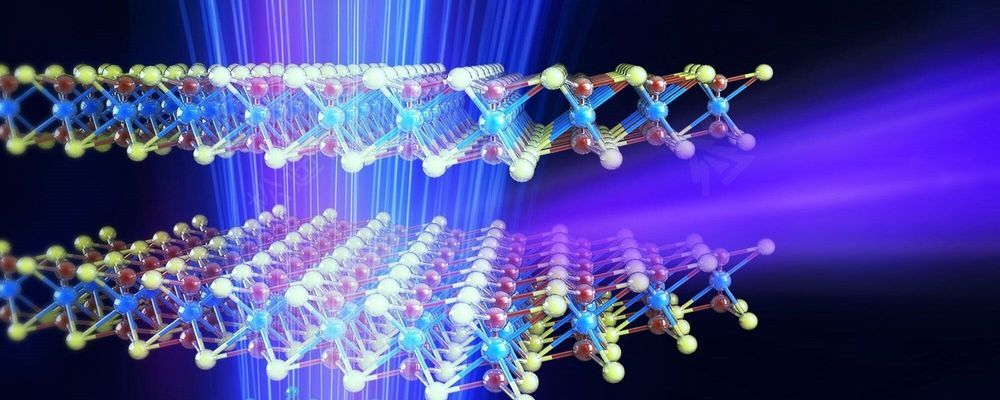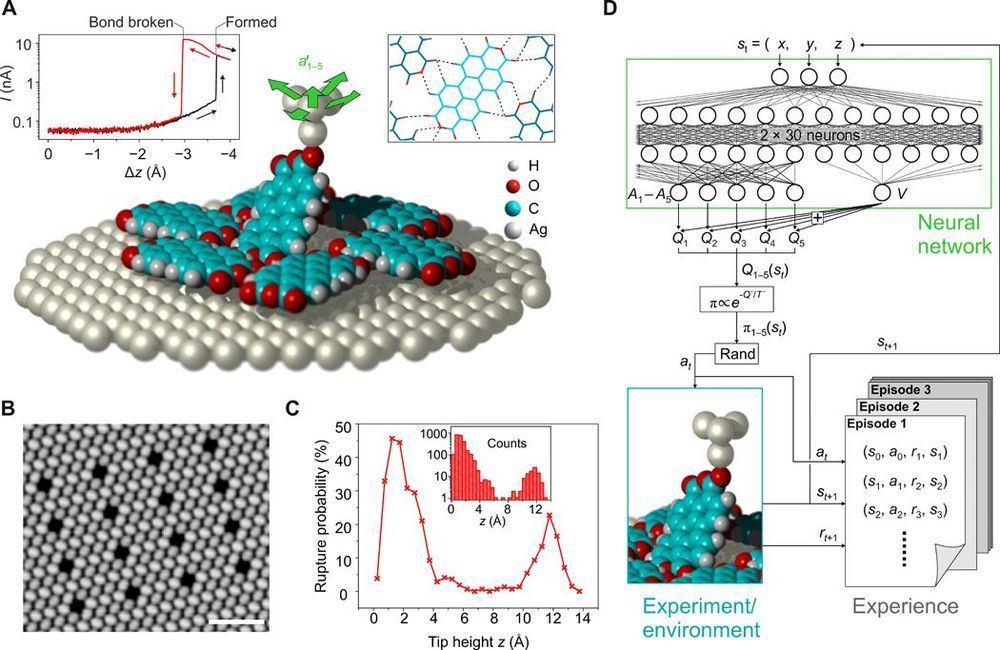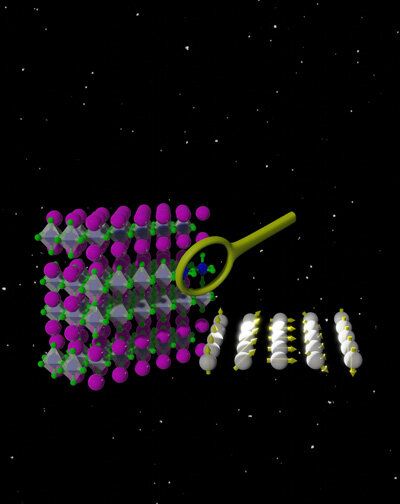Archive for the ‘quantum physics’ category: Page 510
Oct 5, 2020
A single atom can function as either an engine or a fridge
Posted by Quinn Sena in category: quantum physics
Scientists reported a single-atom energy-conversion quantum device operating as an engine, or a refrigerator, coupled to a quantum load.
Oct 5, 2020
Quantum computing: Photon startup lights up the future of computers and cryptography
Posted by Quinn Sena in category: quantum physics
Oct 4, 2020
The Quantum Internet Will Blow Your Mind. Here’s What It Will Look Like
Posted by Genevieve Klien in categories: internet, quantum physics
The next generation of the Internet will rely on revolutionary new tech. It will make unhackable networks real — and transmit information faster than the speed of light.
Oct 4, 2020
Single photons from a silicon chip
Posted by Quinn Sena in categories: encryption, quantum physics, robotics/AI, security
(Nanowerk News) Quantum technology holds great promise: Just a few years from now, quantum computers are expected to revolutionize database searches, AI systems, and computational simulations. Today already, quantum cryptography can guarantee absolutely secure data transfer, albeit with limitations. The greatest possible compatibility with our current silicon-based electronics will be a key advantage. And that is precisely where physicists from the Helmholtz-Zentrum Dresden-Rossendorf (HZDR) and TU Dresden have made remarkable progress: The team has designed a silicon-based light source to generate single photons that propagate well in glass fibers.
Oct 2, 2020
This ‘unhackable’ network uses the weird power of quantum physics
Posted by Quinn Sena in categories: encryption, engineering, quantum physics

O,.o.
BT and Toshiba have deployed an ‘unhackable’ quantum network that uses streams of photons to encrypt sensitive communications.
Continue reading “This ‘unhackable’ network uses the weird power of quantum physics” »
Oct 2, 2020
Tunable free-electron X-ray radiation from van der Waals materials
Posted by Quinn Sena in categories: biotech/medical, chemistry, engineering, nanotechnology, quantum physics, security
Technion researchers have developed accurate radiation sources that are expected to lead to breakthroughs in medical imaging and other areas. They have developed precise radiation sources that may replace the expensive and cumbersome facilities currently used for such tasks. The suggested apparatus produces controlled radiation with a narrow spectrum that can be tuned with high resolution, at a relatively low energy investment. The findings are likely to lead to breakthroughs in a variety of fields, including the analysis of chemicals and biological materials, medical imaging, X-ray equipment for security screening, and other uses of accurate X-ray sources.
Published in the journal Nature Photonics, the study was led by Professor Ido Kaminer and his master’s student Michael Shentcis as part of a collaboration with several research institutes at the Technion: the Andrew and Erna Viterbi Faculty of Electrical Engineering, the Solid State Institute, the Russell Berrie Nanotechnology Institute (RBNI), and the Helen Diller Center for Quantum Science, Matter and Engineering.
The researchers’ paper shows an experimental observation that provides the first proof-of-concept for theoretical models developed over the last decade in a series of constitutive articles. The first article on the subject also appeared in Nature Photonics. Written by Prof. Kaminer during his postdoc at MIT, under the supervision of Prof. Marin Soljacic and Prof. John Joannopoulos, that paper presented theoretically how two-dimensional materials can create X-rays. According to Prof. Kaminer, “that article marked the beginning of a journey towards radiation sources based on the unique physics of two-dimensional materials and their various combinations—heterostructures. We have built on the theoretical breakthrough from that article to develop a series of follow-up articles, and now, we are excited to announce the first experimental observation on the creation of X-ray radiation from such materials, while precisely controlling the radiation parameters.”
Oct 2, 2020
Finnish researchers claim quantum computing breakthrough
Posted by Genevieve Klien in categories: particle physics, quantum physics, supercomputing
Scientists have created a device which could make it easier to harness super-fast quantum computers for real-world applications, a team at Finland’s Aalto University said on Wednesday.
Quantum computers are a new generation of machines powered by energy transfers between so-called “artificial atoms”—electrical circuits a fraction of a millimetre across.
Scientists believe the devices will eventually be able to vastly outperform even the world’s most powerful conventional supercomputers.
Oct 1, 2020
Autonomous robotic nanofabrication with reinforcement learning
Posted by Quinn Sena in categories: quantum physics, robotics/AI
The ability to handle single molecules as effectively as macroscopic building blocks would enable the construction of complex supramolecular structures inaccessible to self-assembly. The fundamental challenges obstructing this goal are the uncontrolled variability and poor observability of atomic-scale conformations. Here, we present a strategy to work around both obstacles and demonstrate autonomous robotic nanofabrication by manipulating single molecules. Our approach uses reinforcement learning (RL), which finds solution strategies even in the face of large uncertainty and sparse feedback. We demonstrate the potential of our RL approach by removing molecules autonomously with a scanning probe microscope from a supramolecular structure. Our RL agent reaches an excellent performance, enabling us to automate a task that previously had to be performed by a human. We anticipate that our work opens the way toward autonomous agents for the robotic construction of functional supramolecular structures with speed, precision, and perseverance beyond our current capabilities.
The swift development of quantum technologies could be further advanced if we managed to free ourselves from the imperatives of crystal growth and self-assembly and learned to fabricate custom-built metastable structures on atomic and molecular length scales routinely (1–7). Metastable structures, apart from being more abundant than stable ones, tend to offer attractive functionalities, because their constituent building blocks can be arranged more freely and in particular in desired functional relationships (7).
It is well established that single molecules can be manipulated and arranged using mechanical, optical, or magnetic actuators (8), such as the tips of scanning probe microscopes (SPMs) (9–12) or optical tweezers (13, 14). With all these types of actuators, a sequence of manipulation steps can be carried out to bring a system of molecular building blocks into a desired target state. The problem of creating custom-built structures from single molecules can therefore be cast as a challenge in robotics.
Oct 1, 2020
New design principles for spin-based quantum materials
Posted by Quinn Sena in categories: computing, internet, quantum physics
As our lives become increasingly intertwined with technology—whether supporting communication while working remotely or streaming our favorite show—so too does our reliance on the data these devices create. Data centers supporting these technology ecosystems produce a significant carbon footprint—and consume 200 terawatt hours of energy each year, greater than the annual energy consumption of Iran. To balance ecological concerns yet meet growing demand, advances in microelectronic processors—the backbone of many Internet of Things (IoT) devices and data hubs—must be efficient and environmentally friendly.
Northwestern University materials scientists have developed new design principles that could help spur development of future quantum materials used to advance (IoT) devices and other resource-intensive technologies while limiting ecological damage.
“New path-breaking materials and computing paradigms are required to make data centers more energy-lean in the future,” said James Rondinelli, professor of materials science and engineering and the Morris E. Fine Professor in Materials and Manufacturing at the McCormick School of Engineering, who led the research.
















